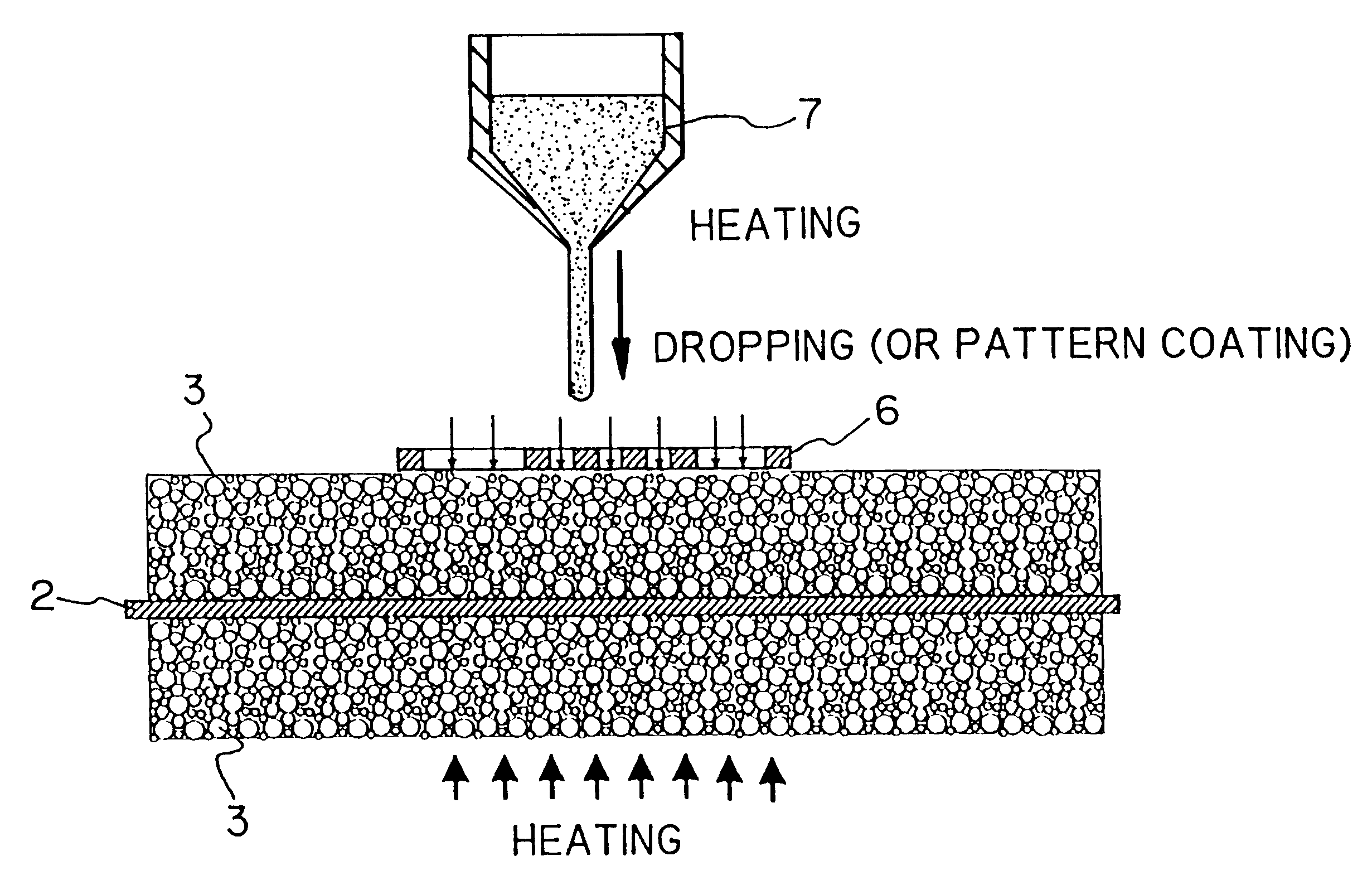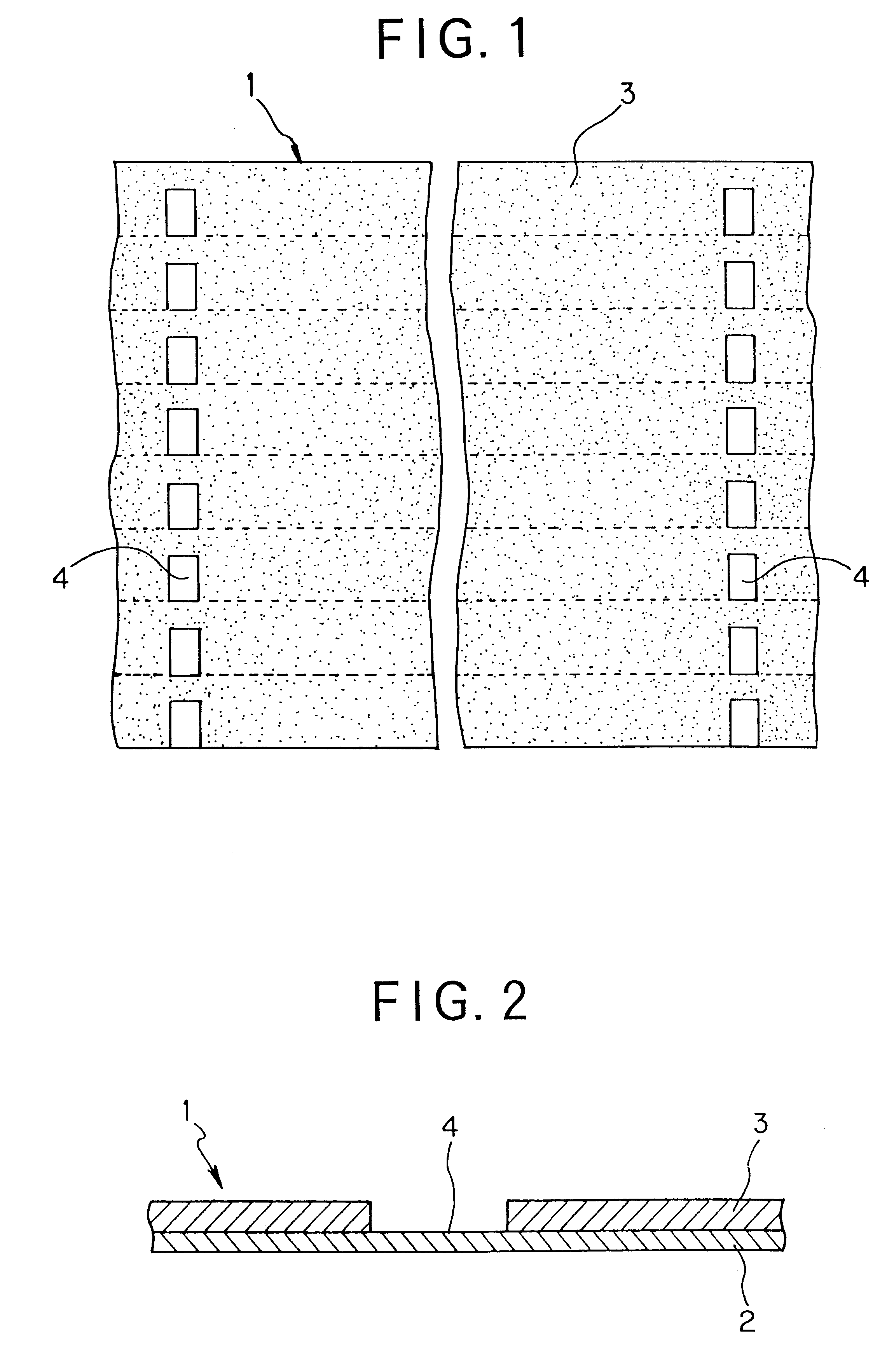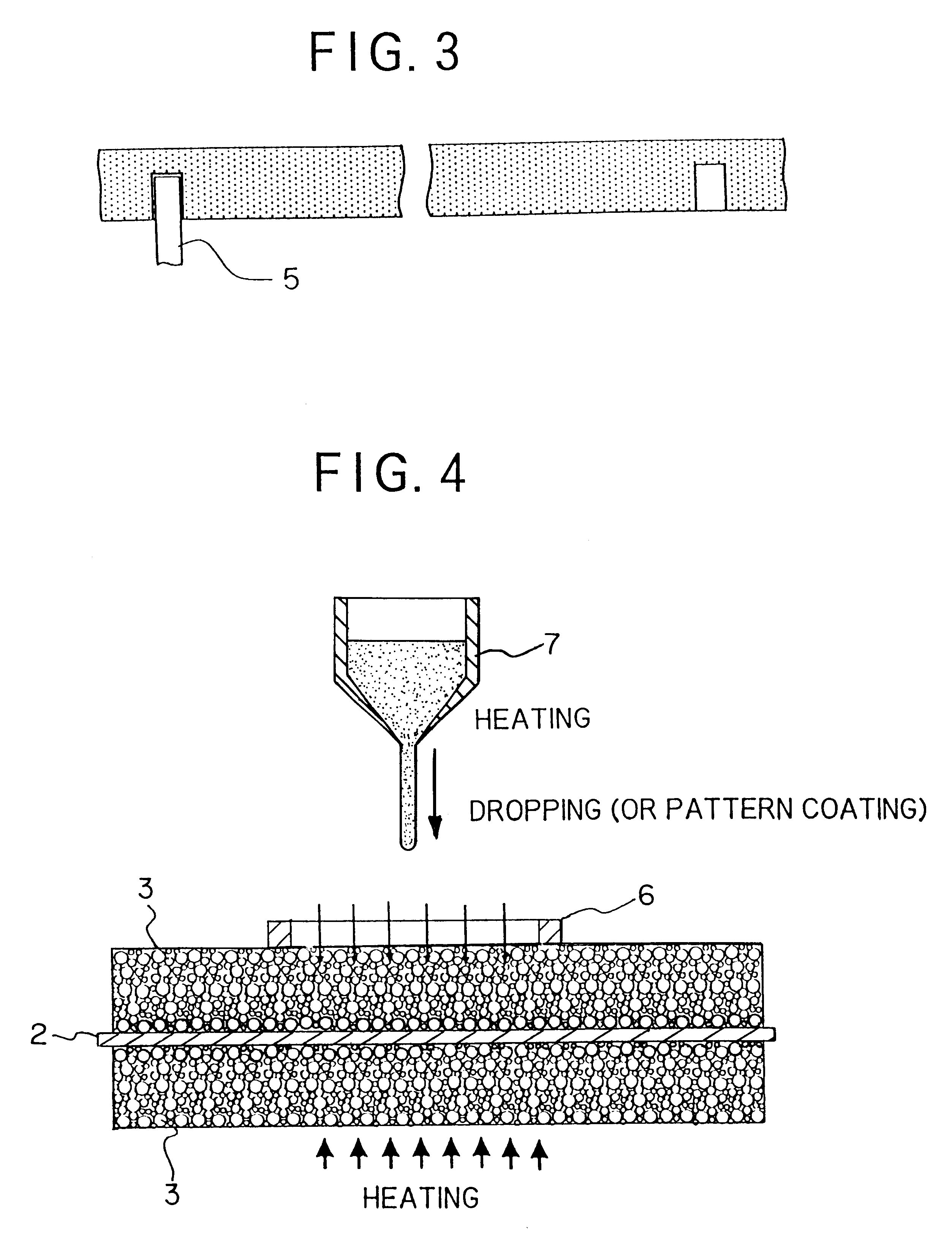Process for producing an electrode plate with a terminal mounting portion and/or an identification mark
a technology of identification mark and terminal mounting portion, which is applied in the manufacture of cell components, electrochemical generators, impregnation, etc., can solve the problems of poor patterning precision, unfavorable coating layer existence for a certain portion, and difficult to form patterns at high speed
- Summary
- Abstract
- Description
- Claims
- Application Information
AI Technical Summary
Problems solved by technology
Method used
Image
Examples
example a-1
First, a electrode forming composition for a positive electrode containing an active material for the positive electrode was prepared in the following manner.
The following materials were used for preparing of the positive electrode forming composition: LiCoO.sub.2 powder of 40 weight parts having a particle size of from 1 to 100 .mu.m and an average particle size of 10 .mu.m, a graphite powder of 5.0 weight parts as a conductive agent, a polyvinylidene fluoride of 4 weight parts as a binder (having the product name of "NEOFLON VDF, VP-850" manufactured by DAIKIN INDUSTRIES, CO. LTD.), and a N-methyl-2-pyrrolidone of 20 weight parts.
In these materials, the polyvinylidene fluoride was previously dissolved by N-methyl-2-pyrrolidone to preliminarily prepare a vanish, to which the other powdery materials were added. These powdery materials and the varnish were stirred and mixed by means of a planetary mixer (manufactured by KODAIRA SEISHAKUSHO CO. LTD.) for a period of time of 30 minutes...
example a-2
Electrode plates for the positive and negative electrodes were prepared under substantially the same applying and drying conditions as those in the Example A-1.
The thus prepared electrode plates for the positive and negative electrodes were placed on a hot plate heated to a temperature of 120.degree. C., and polyethylene (having the product name of "SANWAX 161P" manufactured by SANYO CHEMICAL INDUSTRIES, LTD.), which has been heated to a temperature of 250.degree. C. to melt it, was applied on these electrode plate in a plurality of rectangular shapes each having a width of 3 mm and a length of 7 mm by means of a dispenser through a metallic plate mask corresponding to a negative pattern having a shape shown in FIG. 1. Thereafter, the hot plate was removed and the polyethylene was solidified. The solidified polyethylene provided a strong stiffness, and when it was lifted up by picking up an end portion thereof, the solidified polyethylene was easily removed from the collector with i...
example a-3
Electrode plates for the positive and negative electrodes were prepared under substantially the same applying and drying conditions as those in the Example A-1.
The thus prepared electrode plates for the positive and negative electrodes were heated to a temperature of 70.degree. C. by means of infrared ray lamp, and a wax (having the product name of "DIACARNA 30L manufactured by MITSUBISHI CHEMICAL CORPORATION), which has been heated to a temperature of 160.degree. C. to melt it, was applied on these electrode plates in a plurality of rectangular shapes each having a width of 5 mm and length of 5 mm by means of a dispenser through a metallic plate mask corresponding to a negative pattern having a shape shown in FIG. 1. Thereafter, the infrared ray lamp was removed and the wax was solidified. The solidified wax was hard and easily broken, and the solidified wax portion was naturally raised by applying a tension to the collector and easily peeled off from the collector. The pattern of ...
PUM
| Property | Measurement | Unit |
|---|---|---|
| melting viscosity | aaaaa | aaaaa |
| melting point | aaaaa | aaaaa |
| melting point | aaaaa | aaaaa |
Abstract
Description
Claims
Application Information
 Login to View More
Login to View More - R&D
- Intellectual Property
- Life Sciences
- Materials
- Tech Scout
- Unparalleled Data Quality
- Higher Quality Content
- 60% Fewer Hallucinations
Browse by: Latest US Patents, China's latest patents, Technical Efficacy Thesaurus, Application Domain, Technology Topic, Popular Technical Reports.
© 2025 PatSnap. All rights reserved.Legal|Privacy policy|Modern Slavery Act Transparency Statement|Sitemap|About US| Contact US: help@patsnap.com



